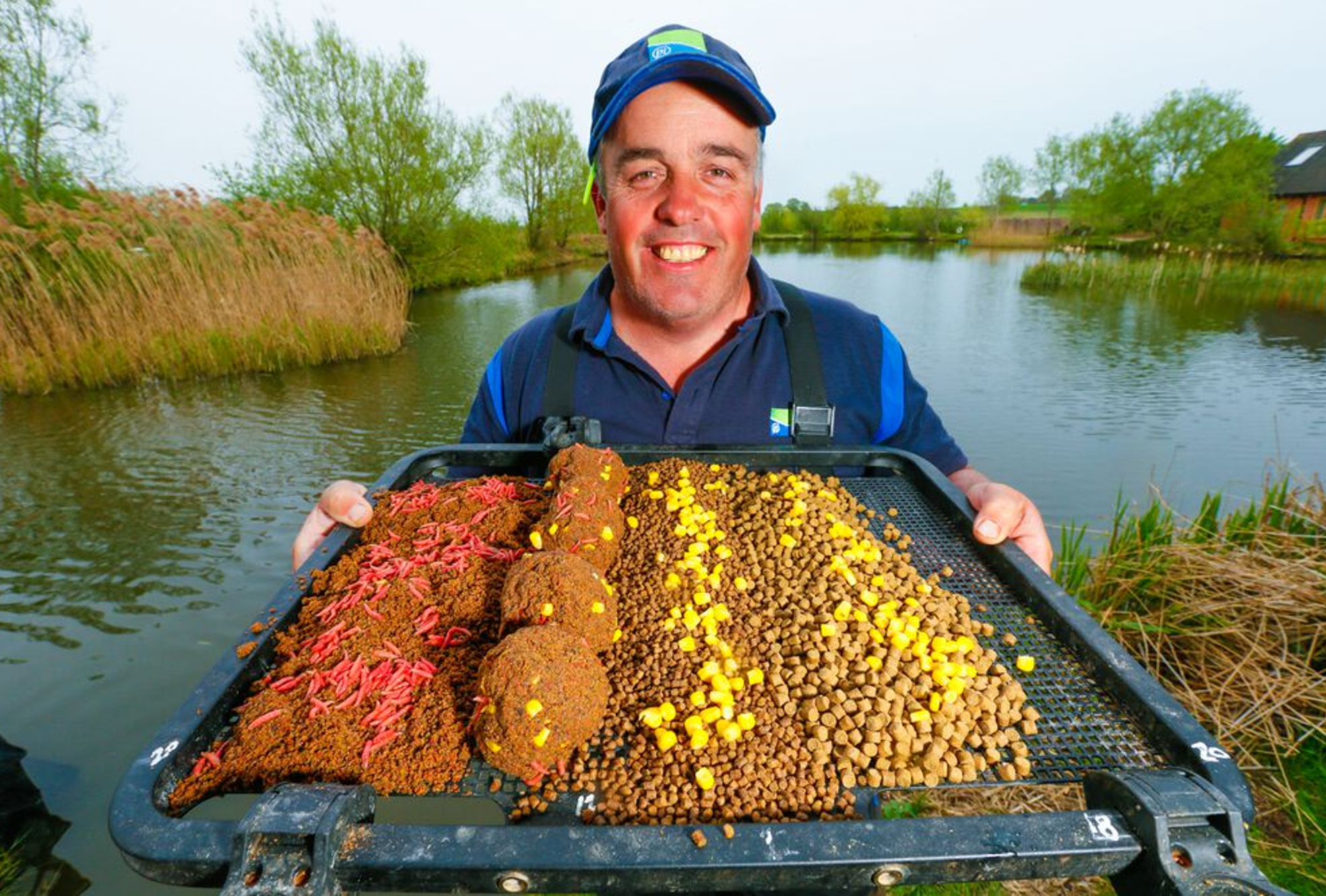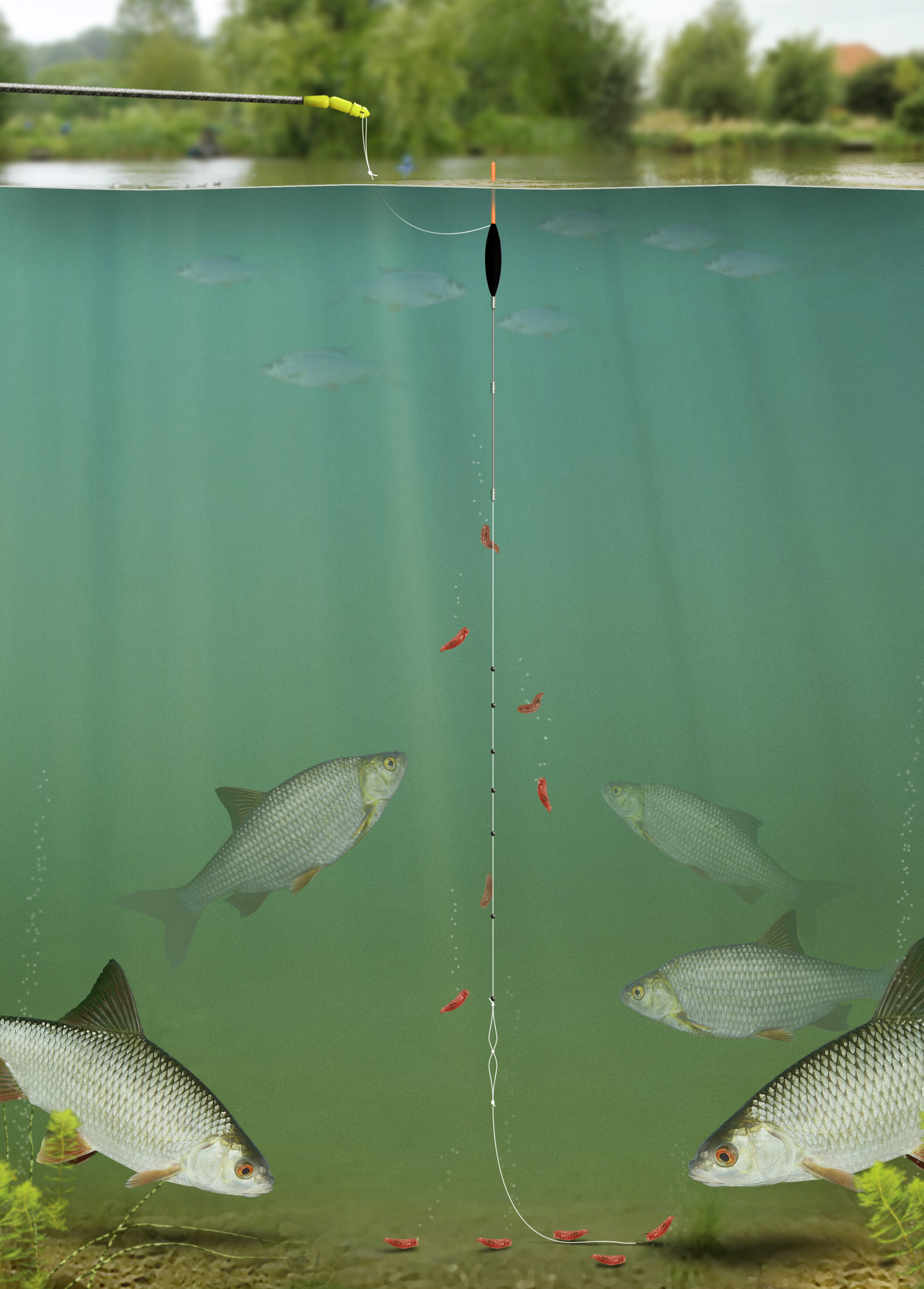Commercial Fishing Tips | How depth should dictate your margin feed - Des Shipp
JUST about any bait has the potential to work in the margins, but there is one factor that should dictate what you use – the depth.
Pinning the fish to the deck is imperative for this style of fishing. If they are tempted to come off bottom then you will experience line bites, which will lead to you foul-hooking fish.
With this in mind, you need to use baits that will get down to the deck and not create much of a cloud. At the same time, you don’t want to give them loads of loosefeed as this will increase the amount of time it takes for the fish to take the hookbait.
Around 18ins is the ideal depth, but there are times when no matter how much you search the margins, it’s impossible to find it. Therefore, the depth I find will dictate the baits that I turn to. I have worked on four bait combinations, and each performs best at a certain depth.
These pairings have worked well for me, and I’m sure that they’ll do the same for you!
Four bait combinations for the margins, each performs best at a certain depth.
1ft-deep swim
Fish won’t come up off the deck in this depth because it is simply too shallow. Use loose groundbait and dead maggots – a low-feed combination with loads of attraction!
2ft-deep swim
In this depth fish are tempted to come off the bottom for loosefeed. Use sweetcorn and maggots laced in balls of lightly squeezed groundbait to prevent a big cloud forming.
3ft-deep swim
Groundbait in any form can cause problems at this sort of depth. Heavier baits such as 4mm pellets and sweetcorn sink fairly quickly and will keep the carp down on the deck.
4ft-PLUS swim
Some fisheries have deep margins, and 6mm or 8mm pellets are needed. They will sink quickly and stay firmly on the deck, even when carp are charging around.
Consider your feed choice when margin feeding
Commercial Fishing Tips - How to keep bites coming in the middle of the day - Des Shipp
When bites dry up and things get slow in the middle of the day, don’t just sit there waiting for something to turn up. Look no further than fishing off your rod-tip or on a top kit on the pole in front of you.
Action doesn’t have to be slow in the middle of the day - stay active!
Rig up with a size 16 hook and a 4x14 pole float or a small 2BB waggler, feeding maggots or casters.
A typical Stillwater roach rig perfect for margin work
This will catch mainly silvers, but something bigger can turn up too.
Steady feeding with maggots close in can draw all sorts into the peg
I’ll feed a dozen maggots by hand here every five minutes and when my other lines slow up, switch to this one. You may catch all day here or it may only last 30 minutes.
Commercial Fishing Tips | Reach for the waggler with Des Shipp
I’ve fished enough rock hard winter matches to know that the pole isn’t the be-all and end-all when it comes to catching enough to put you in the money.
In truth, it can be the worst tactic to pick in clear water despite its superior rig control and bait presentation.
The problem is that the distance you can fish with the pole may not put you on the fish, which back away from disturbance on the bank. What’s more, any pole, even if the top kit is painted grey or white, will cast a shadow that won’t be to the liking of carp and skimmers.
Change to the waggler and it’s a completely different picture. The likelihood of spooking fish has gone, and you can cast around the peg to find a few bites.
On top of that, the waggler is just a lovely way to fish, one that’s all too often forgotten in favour of the pole or tip. You just need the right conditions and the right peg to put it all into practice!
When to fish it
Obviously, if there are no bites on the pole, the float is your next choice. Cast several metres past where you’ve been on the long pole to see if the fish have backed off a little or have been sat there from the start.
This range has to be comfortable enough to loosefeed over, and you also need the right wind to fish the float properly. Blowing over your back is ideal while a side wind, as long as it isn’t too strong, will do as well. You want to be able to cast, sink the line and have the float stay put for up to five minutes. If this isn’t happening, it might be a day for fishing the feeder or bomb.
Terminal tackle
I use 3lb Sinking Feeder Mono as mainline attached to a 20cm hooklink of 0.12mm Accu Power and a size 16 SFL-B hook. This balanced kit will easily land big carp and skimmers.
If the rod is too stiff, you’ll bump fish off and casting becomes awkward and inaccurate. I go for a classic match-style 13ft rod, the Supera, with a casting weight of 3g-10g. This isn’t cosmetic guff and is a useful guideline to help you get the most out of your fishing!
Fish overdepth
Owing to the lack of close control on the waggler, the rig is left to fish on its own, as it were, and you need to avoid any chance of the float being pushed through the swim by the wind or tow on the water.
Fishing overdepth is therefore a must. I start four inches over and see how it goes. This may increase to eight inches if the wind is bad. Another tip is to add more depth if you are missing bites. This gives the carp and skimmers more time to get hold of the bait before a bite is registered on the float tip.
Getting twitchy
Once I’ve cast out it’s not just a matter of leaving the float alone until it goes under.
Skimmers like a bait that’s being twitched along the bottom so, as you would on the feeder or if lifting and dropping on the pole, I’ll wait a few minutes and then move the bait.
This is dead easy to do and involves flicking the rod tip towards me as if I were sinking the line.
Watch the float come back to the surface and be ready to strike, as a bite should be pretty swift in coming.
What waggler?
I carry three types with me and all are loaded. This does away with clunky bulk locking shots and makes for smoother and more accurate casting through any wind.
In ideal conditions, an insert waggler is perfect but when it is blowing, a bodied or straight float comes into play – a 2.5AAA to 3.5AAA loading in old money is about right for most casts.
These are locked on the line with No8 Stotz, two above the float and four below, as these are easier to move than split shot. The remaining weight in the rig it taken up by a couple of No8 shot which are evenly spread down the line and a tiny quick-change swivel.
This lets me change hooklinks from unbanded to banded in a matter of seconds and also cuts down on spin-ups on the hooklink.
Feeds and baits
Skimmers love pellets and corn just as much as groundbait and maggots, so to give myself the chance of catching them and bonus carp, I err on the ‘commercial’ side with regard to the bait tray. Corn is brilliant in winter, easy to see and super soft. Sonubaits F1 Corn makes up my hookbait and loosefeed.
I fish a single piece on the hook but vary the size on each cast, from big to small, to see if it makes a difference.
Feeding is via the catapult at the rate of a dozen grains every cast – don’t worry when the feed spreads out before it lands as this is another great plus point for the waggler.
Because it’s not super-accurate, it will draw fish in from a wider area and also give you plenty of different spots to cast to, knowing that some corn will have landed there.
Sonu’s 4mm Pro Feed Pellets are my second feed but these are only introduced from time to time.
They pack a bit of a fishy smell to get the fish interested and also allow me to switch over to fishing a banded 4mm or 6mm pellet on the hook if I feel a change is required.
‘Spodding’ ground bait
Should your venue respond to groundbait you’ll have to use it. You can fire in small balls with a catapult but I find this a bit of a faff. I prefer to have a large cage feeder on a separate rod and use this as carp anglers would a spod, filling the feeder with crumb and casting several times to get a bed down at the start.
It looks weird, but it works!









